Models and reality
from Lars Syll
One of the limitations with economics is the restricted possibility to perform experiments, forcing it to mainly rely on observational studies for knowledge of real-world economies.
But still — the idea of performing laboratory experiments holds a firm grip of our wish to discover (causal) relationships between economic ‘variables.’If we only could isolate and manipulate variables in controlled environments, we would probably find ourselves in a situation where we with greater ‘rigour’ and ‘precision’ could describe, predict, or explain economic happenings in terms of ‘structural’ causes, ‘parameter’ values of relevant variables, and economic ‘laws.’
Galileo Galilei’s experiments are often held as exemplary for how to perform experiments to learn something about the real world. Galileo’s heavy balls dropping from the tower of Pisa, confirmed that the distance an object falls is proportional to the square of time and that this law (empirical regularity) of falling bodies could be applicable outside a vacuum tube when e. g. air existence is negligible.
The big problem is to decide or find out exactly for which objects air resistance (and other potentially ‘confounding’ factors) is ‘negligible.’ In the case of heavy balls, air resistance is obviously negligible, but how about feathers or plastic bags?
One possibility is to take the all-encompassing-theory road and find out all about possible disturbing/confounding factors — not only air resistance — influencing the fall and build that into one great model delivering accurate predictions on what happens when the object that falls is not only a heavy ball but feathers and plastic bags. This usually amounts to ultimately state some kind of ceteris paribus interpretation of the ‘law.’
Another road to take would be to concentrate on the negligibility assumption and to specify the domain of applicability to be only heavy compact bodies. The price you have to pay for this is that (1) ‘negligibility’ may be hard to establish in open real-world systems, (2) the generalization you can make from ‘sample’ to ‘population’ is heavily restricted, and (3) you actually have to use some ‘shoe leather’ and empirically try to find out how large is the ‘reach’ of the ‘law.’
In mainstream economics, one has usually settled for the ‘theoretical’ road (and in case you think the present ‘natural experiments’ hype has changed anything, remember that to mimic real experiments, exceedingly stringent special conditions have to obtain).
In the end, it all boils down to one question — are there any Galilean ‘heavy balls’ to be found in economics, so that we can indisputably establish the existence of economic laws operating in real-world economies?
As far as I can see there are some heavy balls out there, but not even one single real economic law.
Economic factors/variables are more like feathers than heavy balls — non-negligible factors (like air resistance and chaotic turbulence) are hard to rule out as having no influence on the object studied.
Galilean experiments are hard to carry out in economics, and the theoretical ‘analogue’ models economists construct and in which they perform their ‘thought-experiments’ build on assumptions that are far away from the kind of idealized conditions under which Galileo performed his experiments. The ‘nomological machines’ that Galileo and other scientists have been able to construct have no real analogues in economics. The stability, autonomy, modularity, and interventional invariance, that we may find between entities in nature, simply are not there in real-world economies. That’s are real-world fact, and contrary to the beliefs of most mainstream economists, they won’t go away simply by applying deductive-axiomatic economic theory with tons of more or less unsubstantiated assumptions.
By this, I do not mean to say that we have to discard all (causal) theories/laws building on modularity, stability, invariance, etc. But we have to acknowledge the fact that outside the systems that possibly fulfill these requirements/assumptions, they are of little substantial value. Running paper and pen experiments on artificial ‘analogue’ model economies is a sure way of ‘establishing’ (causal) economic laws or solving intricate econometric problems of autonomy, identification, invariance and structural stability — in the model world. But they are pure substitutes for the real thing and they don’t have much bearing on what goes on in real-world open social systems. Setting up convenient circumstances for conducting Galilean experiments may tell us a lot about what happens under those kinds of circumstances. But — few, if any, real-world social systems are ‘convenient.’ So most of those systems, theories and models, are irrelevant for letting us know what we really want to know.
To solve, understand, or explain real-world problems you actually have to know something about them — logic, pure mathematics, data simulations or deductive axiomatics don’t take you very far. Most econometrics and economic theories/models are splendid logic machines. But — applying them to the real world is a totally hopeless undertaking! The assumptions one has to make in order to successfully apply these deductive-axiomatic theories/models/machines are devastatingly restrictive and mostly empirically untestable– and hence make their real-world scope ridiculously narrow. To fruitfully analyze real-world phenomena with models and theories you cannot build on patently and known to be ridiculously absurd assumptions. No matter how much you would like the world to entirely consist of heavy balls, the world is not like that. The world also has its fair share of feathers and plastic bags.
Most of the ‘idealizations’ we find in mainstream economic models are not ‘core’ assumptions, but rather structural ‘auxiliary’ assumptions. Without those supplementary assumptions, the core assumptions deliver next to nothing of interest. So to come up with interesting conclusions you have to rely heavily on those other — ‘structural’ — assumptions.
Economic models frequently invoke entities that do not exist, such as perfectly rational agents, perfectly inelastic demand functions, and so on. As economists often defensively point out, other sciences too invoke non-existent entities, such as the frictionless planes of high-school physics. But there is a crucial difference: the false-ontology models of physics and other sciences are empirically constrained. If a physics model leads to successful predictions and interventions, its false ontology can be forgiven, at least for instrumental purposes – but such successful prediction and intervention is necessary for that forgiveness. The
idealizations of economic models, by contrast, have not earned their keep in this way. So the problem is not the idealizations in themselves so much as the lack of empirical success they buy us in exchange. As long as this problem remains, claims of explanatory credit will be unwarranted.
In physics, we have theories and centuries of experience and experiments that show how gravity makes bodies move. In economics, we know there is nothing equivalent. So instead mainstream economists necessarily have to load their theories and models with sets of auxiliary structural assumptions to get any results at all in their models.
So why then do mainstream economists keep on pursuing this modeling project?
Mainstream ‘as if’ models are based on the logic of idealization and a set of tight axiomatic and ‘structural’ assumptions from which consistent and precise inferences are made. The beauty of this procedure is, of course, that if the assumptions are true, the conclusions necessarily follow. But it is a poor guide for real-world systems. As Hans Albert has it on this ‘style of thought’:
A theory is scientifically relevant first of all because of its possible explanatory power, its performance, which is coupled with its informational content …
Clearly, it is possible to interpret the ‘presuppositions’ of a theoretical system … not as hypotheses, but simply as limitations to the area of application of the system in question. Since a relationship to reality is usually ensured by the language used in economic statements, in this case the impression is generated that a content-laden statement about reality is being made, although the system is fully immunized and thus without content. In my view that is often a source of self-deception in pure economic thought …
The way axioms and theorems are formulated in mainstream economics often leaves their specification without almost any restrictions whatsoever, safely making every imaginable evidence compatible with the all-embracing ‘theory’ — and theory without informational content never risks being empirically tested and found falsified. Used in mainstream ‘thought experimental’ activities, it may, of course, be very ‘handy,’ but totally void of any empirical value.
Some economic methodologists have lately been arguing that economic models may well be considered ‘minimal models’ that portray ‘credible worlds’ without having to care about things like similarity, isomorphism, simplified ‘representationality’ or resemblance to the real world. These models are said to resemble ‘realistic novels’ that portray ‘possible worlds’. And sure: economists constructing and working with that kind of models learn things about what might happen in those ‘possible worlds’. But is that really the stuff real science is made of? I think not. As long as one doesn’t come up with credible export warrants to real-world target systems and show how those models — often building on idealizations with known to be false assumptions — enhance our understanding or explanations about the real world, well, then they are just nothing more than just novels. Showing that something is possible in a ‘possible world’ doesn’t give us a justified license to infer that it therefore also is possible in the real world. ‘The Great Gatsby’ is a wonderful novel, but if you truly want to learn about what is going on in the world of finance, I would recommend rather reading Minsky or Keynes and directly confront real-world finance.
Different models have different cognitive goals. Constructing models that aim for explanatory insights may not optimize the models for making (quantitative) predictions or deliver some kind of ‘understanding’ of what’s going on in the intended target system. All modeling in science have tradeoffs. There simply is no ‘best’ model. For one purpose in one context model A is ‘best’, for other purposes and contexts model B may be deemed ‘best’. Depending on the level of generality, abstraction, and depth, we come up with different models. But even so, I would argue that if we are looking for what I have called ‘adequate explanations’ (Syll, Ekonomisk teori och metod, Studentlitteratur, 2005) it is not enough to just come up with ‘minimal’ or ‘credible world’ models.
The assumptions and descriptions we use in our modeling have to be true — or at least ‘harmlessly’ false — and give a sufficiently detailed characterization of the mechanisms and forces at work. Models in mainstream economics do nothing of the kind.
Coming up with models that show how things may possibly be explained is not what we are looking for. It is not enough. We want to have models that build on assumptions that are not in conflict with known facts and that show how things actually are to be explained. Our aspirations have to be more far-reaching than just constructing coherent and ‘credible’ models about ‘possible worlds’. We want to understand and explain ‘difference-making’ in the real world and not just in some made-up fantasy world. No matter how many mechanisms or coherent relations you represent in your model, you still have to show that these mechanisms and relations are at work and exist in society if we are to do real science. Science has to be something more than just more or less realistic ‘story-telling’ or ‘explanatory fictionalism.’ You have to provide decisive empirical evidence that what you can infer in your model also helps us to uncover what actually goes on in the real world. It is not enough to present your students with epistemically informative insights about logically possible but non-existent general equilibrium models. You also, and more importantly, have to have a world-linking argumentation and show how those models explain or teach us something about real-world economies. If you fail to support your models in that way, why should we care about them? And if you do not inform us about what are the real-world intended target systems of your modeling, how are we going to be able to value or test them? Without giving that kind of information it is impossible for us to check if the ‘possible world’ models you come up with actually hold also for the one world in which we live — the real world.


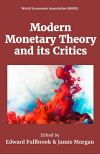
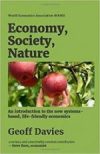

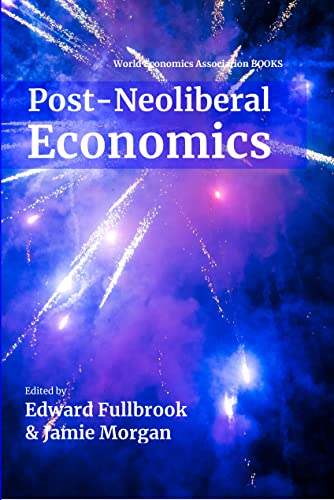
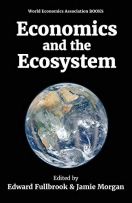
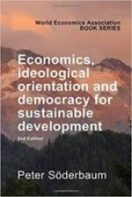
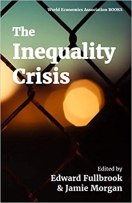
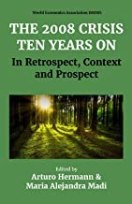
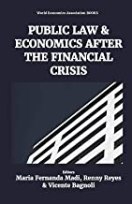

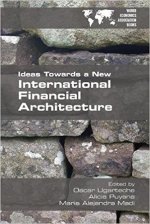

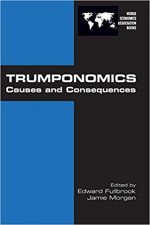



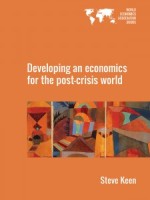
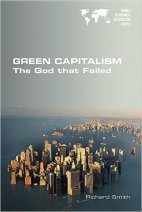

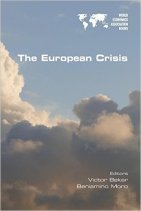
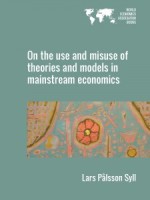

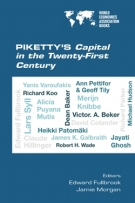
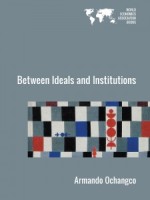

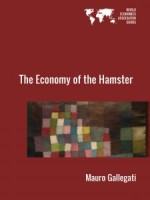

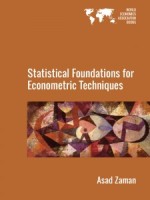
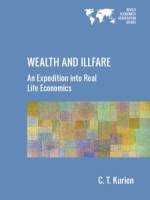

Consider this: if we understood reality there would be no need to create models. Some people do understand reality but they are generally marginalized or ignored, particularly in economics.
There has been some economic experimenting, for instance with the invisible hand. Some countries have eliminated it and replaced it with state planning. We can investigate the outcomes:
https://www.naturalmoney.org/blog/211218.html
Of course, proof is always hard to come by in economics, but some people make a job out of ignoring obvious explanations. Perhaps, the burden of proof should be on them.
What a load of bovine excrement in the linked article you provided. Clearly that writer has never worked retail.
I used to accompany my uncle on his rounds as a bread salesperson to stores for many years in a large city. My job was to remove the outdated bread and take it to the truck for disposal later.
My daughter had a job with Frito Lay potato chips and her job was to remove the dated products from the large box stores and reload the shelves with “fresh” or new product.
There are numerous stories AND STUDIES reported in the media about the quantities of surplus food thrown into the garbage at restaurants and supermarkets. Nothing efficient about that!
Waste is a huge byproduct of the unplanned uncontrolled market. Yes there were problems with the so-called planned economies but that does not justify eulogizing the invisible hand notions.
The invisible hand is another economic myth that has garnered the status of an archetype and is absolute rubbish.
In any case, there was no queueing for bread in London but there was in Moscow. You may call it evidence. Some people glorify the invisible hand and others hate it or claim that it does not exist.
The problem with much of economics is absence of (strong) evidence. And that is the line of thinking in the article: models do not work, the mathematics sucks, etc, etc. You cannot do controlled economic experiments. But there has been economic experimenting nonetheless and we can learn from it.
As with regard to waste, it must be compared to the total production. A focus on waste alone is not a good idea. If there had been famine in the Soviet Union then the waste figure may have compared favourably to England. The Soviet Union was dependent on grain imports while having enough land of its own.
The point I wanted to make, is that despite lack of evidence, something may still exist, and that the invisible hand works better in some cases, for instance, supplying consumer goods, and poorer in other cases, for instance, health care. There is no perfect planning in either case.
Interesting story about Tenino, Washington, printing its own money (wood script to save the local economy due the COVID lockdown.
Lars says: “You have to provide decisive empirical evidence that what you can infer in your model also helps us to uncover what actually goes on in the real world. ”
How can you do that? Given that any model is a simplification of a complex reality with many extraneous influences at work it can only reproduce reality when the other influences don’t disturb the picture, which will seldom be the case. The absence of empirical laws in economics demonstrates the point. So how can one provide decisive evidence?
Keynes and Minsky have written with insight but there is no consensus on how general those insights are. Their “models” although verbally expressed are no less idealizations for that, based on assumptions that are not actually “true”. Sometimes we observe what look like Minsky processes in history; very often we don’t. Why occasionally but not all the time? Evidently the model, even if correct in some sense, is not complete. That is true of the best economic models. There is no economic model of any school that you are absolutely compelled by evidence to accept. Many can be ruled out by econometrics. None can be ruled in. We have not escaped the need for judgement of plausibility on the basis of life experience. If that means economics is not a “science” so be it. That depends on your definition.
WordPress.com / Gravatar.com credentials can be used.
In my opinion, it’s also hard to make models a reality.
Models are needed because we can shape our own future with them.
The basic ideas of social work, which are also true in economics:
What is the problem? Name the problem, talk about it!
Give a professional solution to the problem!
Discussion and professional forums are the first steps towards realization.
In economics, the social solution is not given by the people of science but by politicians. Making a model a reality can take years, even decades.
The problem is that today a tik-tok influncer gets more publicity in the media than the people of science, economists.
When someone creates a new model, they hear back from their own environment that it is self-proclaimed, exaggerated, and destructive.
Models are needed because they help us better understand the world we live in.
I wish everyone a new year rich in models!
László Kulin
Social Expert from Hungary